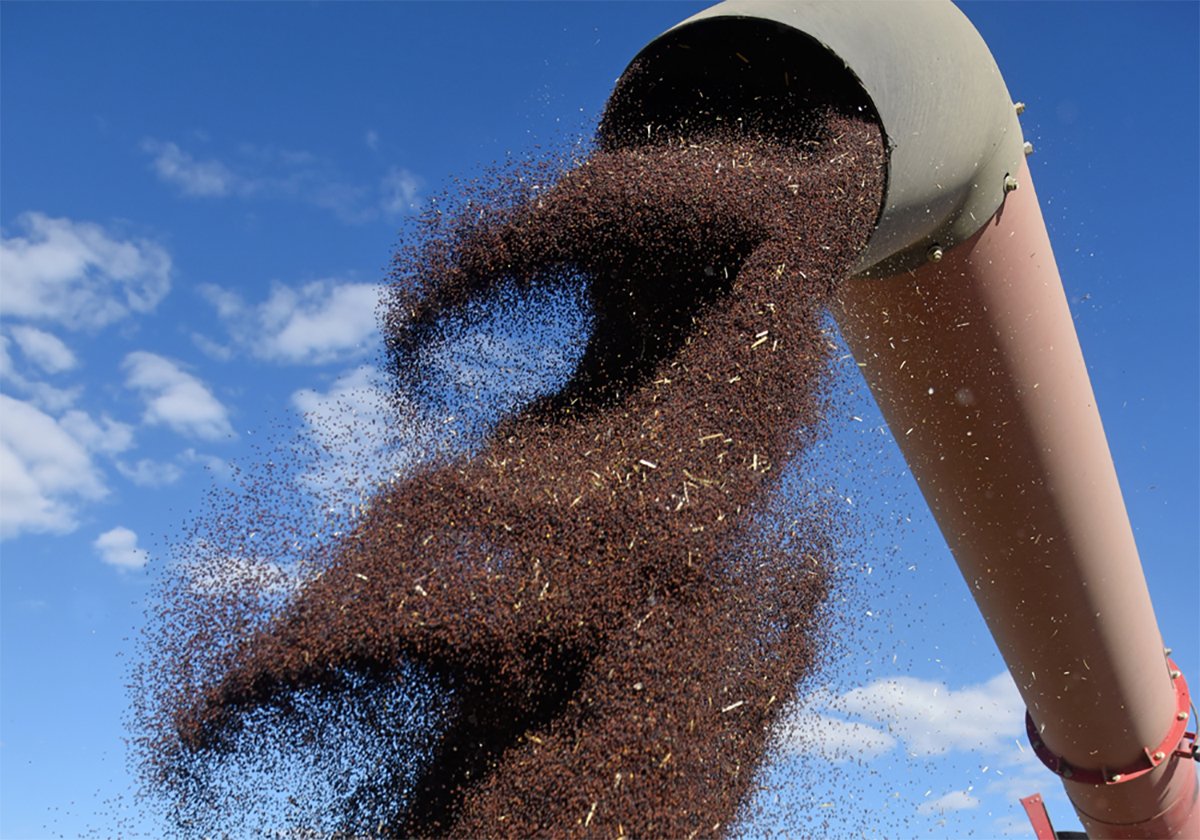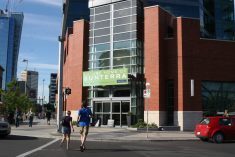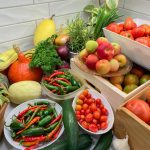DANA, Sask. – Marjorie LaBrash used to duct tape a hairbrush to a paint stick to reach her head and wiggle a wooden spoon to move oven racks to cook meals.
Her recovery from a farm accident that broke both her shoulders in 2006 has been long and painful. She can hold up her left arm but is unable to demonstrate the same range with the other limb.
“I couldn’t take my arms away from my side,” she said of the early days of her recovery that made walking feel unbalanced and dressing herself impossible.
Read Also

Ag minister says tariff situation with China is fragile, volatile
Agriculture ministers from across Canada said they heard canola producers’ concerns about tariffs but it seems unlikely they can do much about them.
Looking back on that sunny summer day, LaBrash recalled feeding the cattle while her husband, Anton, and son, Kelly, were out haying on the family’s 1,200 acre farm in north-central Saskatchewan.
While opening the gate to let the animals get to the feed bunks, one cow pushed hard against the metal gate she was holding. She felt the impact and winced, then carried on with the rest of her day, making and delivering supper to the field.
“She never even mentioned it to me,” said Anton.
LaBrash awoke in the night in throbbing pain for the start of a long journey that began with surgeries to repair the damage. She spent 27 days in hospital and underwent more than six weeks of physiotherapy to strengthen the injured limbs.
The avid handcrafter credited her own therapy of knitting with strengthening her limbs and improving her dexterity while also relaxing and calming her through the pain.
The impact of the cattle pushing on the gate had severely damaged the bones of both upper arms, smashed the socket and torn the rotator cuff
in her right shoulder and fractured her left shoulder socket in four places.
An experienced cattle producer, LaBrash grew up on a dairy farm before she and Anton began operating a grain and cow-calf operation.
She is well aware of the need to take your time, keep animals calm, minimize abrupt movements or loud commands and avoid being between her herding dog and a cow.
“Everybody out there is aware,” LaBrash said. She called it a farm chore she routinely performed.
“I don’t know if you could do it differently. You need strength to open a (16 foot gate),” she said. “It was just an accident.”
LaBrash is a strong supporter of farm safety initiatives and will be featured at the launch of national farm safety week at the Saskatchewan Association of Rural Municipalities meeting this week. Anton is a longtime RM councillor.
LaBrash remains an active participant on her farm, doing chores each morning and helping out as needed, but she conceded her life has changed.
“I drove truck, tractors, hauled round bales. I don’t do any of that anymore,” she said.
The couple rely more now on Kelly, one of their three adult children, to help out.
Anton, who himself has been rolled on by cows at calving, said Marjorie’s accident has affected his farm work.
“It makes you think a little more,” he said, citing the need to keep safety shields on equipment and respect the dangers posed by machinery like post pounders that can send splintered wood flying.
LaBrash said farm spouses’ work on the farm ranges from full working partners to serving as a go-for. Tight margins on the farm make women’s involvement necessary.
“Women in agriculture are out there because of economics. We’re cheap labour
and we’re available,” she said.
“We have to acknowledge that women do a lot of things and we are not invincible and things just happen.”
Livestock, particularly cattle, are the most frequent cause of farm-related fractures, sprains and strains and dislocation injuries in Canada.
Accidents in field crop production, greenhouses and nursery or floriculture operations are the next three most common areas for agricultural injuries, according to a study by the Canadian Agricultural Injury Surveillance Program for 1990-2000.














